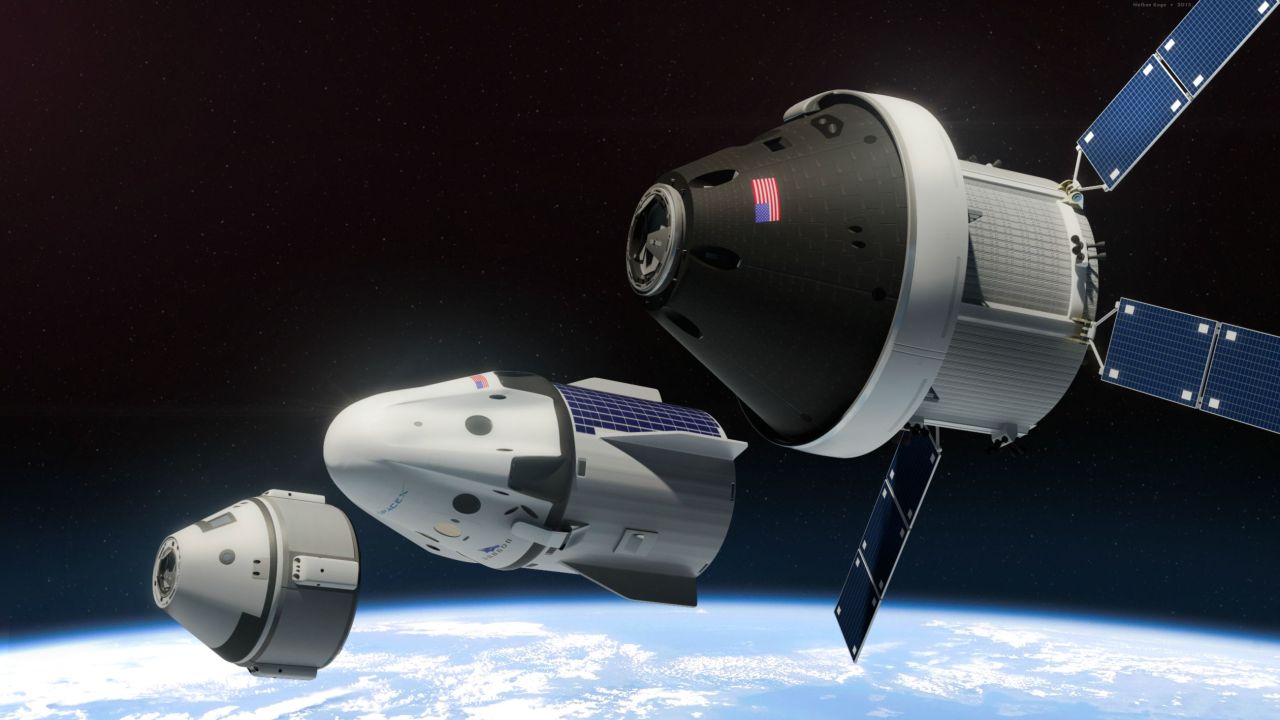Spaceships from SpaceX and Boeing will be ready later than planned

Starliner, Dragon 2, Orion
A new report from NASA shows that spacecraft for manned missions developed by SpaceX and Boeing will be ready for operation no earlier than 2020. Both companies are about equal in terms of creating their spacecraft, and the latter will go into space no earlier than two years later.
The agency partners in question are collaborating with NASA on the Commercial Crew Program . “Both partners are gradually moving forward in terms of creating their own transport systems, but delays at both companies are likely to lead to a lag behind the aggressive work schedule,” the report said.
The spacecraft that are being developed are Dragon and Starliner. Now SpaceX and Boeing are actively developing and testing systems. In order for the conditions of the contract to be fulfilled, any of the companies must complete one flight of the ship in automatic mode and one - manned.
NASA recently updated its work plan by publishing a modified schedule in January this year . According to this plan, Boeing is supposed to launch its ship into space in August 2018 - at the first stage without a team. But the second flight should take place already with the team in November this year. For SpaceX, a flight in automatic mode is also planned in August, and a manned one in December. But the schedule, as far as one can judge, is too optimistic, NASA hastened to conclusions.
Each of NASA's partners in this “spacecraft race” has at least one difficult technical problem. For SpaceX, this is a malfunction with a composite fuel tank - a crack in the wall of such a tank led to the Falcon 9 accident in 2016. The agency does not want to risk the project and wants to achieve maximum safety of launch vehicles for spacecraft.
The report said that NASA informed SpaceX about the inadmissibility of such problems. Company representatives said that after the accident, the structure and design of the tanks were changed, so there are no problems in this regard now. However, SpaceX will have to go through the full certification process in accordance with NASA standards. If there are no cracks, this can be considered a success.
As for Boeing, the company is working on Starliner quite actively, although it does not do without problems in this case either. So, during tests, during emergency situations, the capsule went out of its normal mode of operation, and there were malfunctions. Now Boeing is trying to quickly get rid of these problems.
But NASA has other concerns regarding the Boeing capsule. For example, the agency’s specialists are not sure of the reliability of the protective heat shield, which prevents the effects of temperature on parachutes at the moment of entry into the planet’s atmosphere. According to representatives of the agency, this shield can damage the parachutes when they are thrown. If the NASA ad hoc committee finds the risk too high, Boeing will have to redesign the parachute system, which means delaying the program for at least six months.
There is a positive point. Since both contracts with partners are fixed, the agency will not have additional costs. Only project implementation time will be stretched, but not the budget.
Under the terms of the contract with NASA, spacecraft must accommodate a crew of at least four people. Also, in compartments, according to NASA requirements, it should be possible to place 100 kg of payload. The device should be able to remain docked to the station for 210 days in order to ensure the delivery of astronauts and astronauts to Earth, and, if necessary, to carry out emergency evacuation of the team. NASA believes that working with the new spacecraft Boeing and SpaceX will increase the crew of the station up to seven people. Due to this increaseand the amount of time that can be devoted to research.
By the way, in addition to the spaceships themselves, both partners are developing and spacesuits for the team. Last year, Boeing introduced its own version, called the Boeing Blue. Representatives of the American company claim that this suit is 40% lighter than other models, and it is quite able to hold the pressure and other parameters that a person needs if depressurization occurs. You can sit and stand in a spacesuit, its mittens are great for working with the touch screen of electronic devices. A helmet allows you to use the peripheral vision of the astronauts. The presentation was held at the John Fitzgerald Kennedy Space Center.
